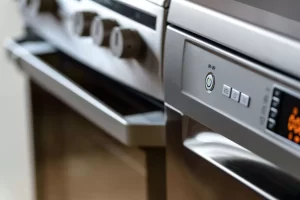The Dos and Don'ts of Cleaning Appliances
Cleaning appliances properly is essential for their longevity and efficient operation. Here are the dos and don’ts of cleaning appliances:
Dos:
 Read the Manufacturer’s Instructions: Always start by reading the manufacturer’s cleaning instructions for your specific appliance. These guidelines may vary depending on the brand and type of appliance.
Read the Manufacturer’s Instructions: Always start by reading the manufacturer’s cleaning instructions for your specific appliance. These guidelines may vary depending on the brand and type of appliance.Unplug Appliances: Before cleaning any appliance, unplug it from the electrical outlet or turn off the power source to ensure your safety.
Use Mild Detergents: For most appliances, use mild dish soap or a specialized appliance cleaner. These are generally safe and effective for removing dirt and grime without damaging surfaces.
Remove Removable Parts: Whenever possible, remove removable parts, such as shelves, drawers, and trays, for easier and more thorough cleaning. Clean these parts separately with warm, soapy water.
Wipe Down Exteriors: Clean the exterior surfaces of appliances regularly with a damp, soapy cloth or a designated stainless steel cleaner for appliances with stainless steel finishes. Dry thoroughly to prevent water spots.
Clean Filters and Vents: If your appliance has filters or vents (e.g., range hood filters, air conditioner filters), follow the manufacturer’s instructions for cleaning or replacing them. Clean filters and vents ensure proper airflow and functionality.
Use Soft Cloths or Sponges: When cleaning sensitive surfaces like glass or stainless steel, use soft cloths, microfiber towels, or non-abrasive sponges to avoid scratches or damage.
Inspect Seals and Gaskets: Periodically check the seals and gaskets on appliances like refrigerators and ovens for signs of wear, mold, or mildew. Clean and replace them as needed to maintain a proper seal.
Don'ts:

1. Don’t Use Abrasive Cleaners: Avoid abrasive cleaners, scouring pads, steel wool, or harsh chemicals on appliance surfaces, as they can scratch or damage the finish.
2. Don’t Spray Water Directly: Avoid spraying water directly onto appliance controls, openings, or electrical components. Instead, dampen a cloth or sponge and use it for cleaning.
3. Don’t Submerge Appliances: Unless specifically designed for immersion (e.g., some blender parts), never submerge appliances in water. This can damage electrical components and pose a safety risk.
4. Don’t Forget to Dry Thoroughly: After cleaning, always make sure that appliance surfaces are completely dry before plugging them back in or turning on the power.
5. Don’t Neglect Ventilation: Keep appliance ventilation openings clear and unobstructed. Poor ventilation can lead to overheating and reduced efficiency.
6. Don’t Use Excessive Force: When removing parts or cleaning, use gentle pressure. Forcing or prying can damage delicate components or cause breakage.
7. Don’t Ignore Safety Precautions: If you’re cleaning a gas appliance like a stove, follow safety precautions to avoid gas leaks or accidents. Ensure gas lines and connections are secure after cleaning.
In summary, following the manufacturer’s instructions and using gentle cleaning methods with appropriate cleaning products will help keep your appliances clean and in good working condition for years to come.
